Gigantic Nests of a Bald Eagle can be 9.5ft wide, and up to 20ft deep

The lack of space in New York may finally have a solution, now that the bald eagles are back in the city as per news reports. To put this hyperbole in perspective, check out an abandoned bald eagle’s nest, larger than the many cramped rooms the city offers. These majestic birds build the largest nests, compared to any birds in North America. Also, the largest tree nests of any animal in the world. But how big is it? Let us find out more about the nest-carpet area of these majestic birds, also America’s national emblem since 1782.
Table of Contents
The largest recorded nest was almost 10 feet wide, and 20 feet deep.
Bald Eagle nests are usually 4-6 feet in diameter and about 3-4 feet deep and weigh 1000 lbs. For reference, it is the average weight of a cow! Though most bald eagle nests are huge, the largest recorded nest was found in St. Petersburg, Florida. It was almost 10 feet in diameter, and 20 feet deep, and weighed roughly 6000 pounds. Another nest in Vermilion, Ohio weighed around 4409 pounds and was beautifully shaped like a wine glass.
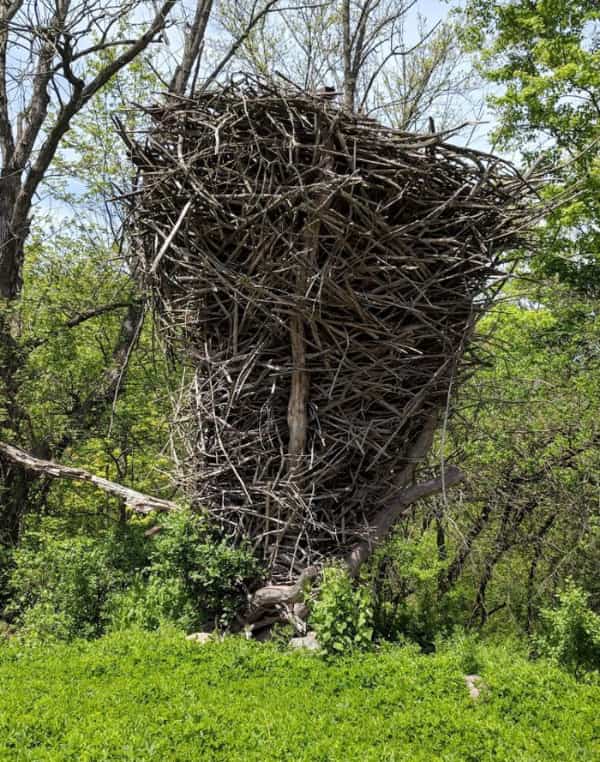
These sovereigns of the sky usually choose areas by rivers, lakes, or other water bodies to build their nests. They pick the tallest, strongest trees, usually the mature ones like white pine and cottonwood that can support the weight of their nests (also called aeries).

They use long sticks, and twigs to build their nests, and often line them with grass, moss, plant stalks, lichens, and seaweed, to cushion the eggs and babies. Bald eagles in barren regions build their nests on cliffs or in high-secluded places.
Bald Eagles are recyclers and reuse their nests every year.
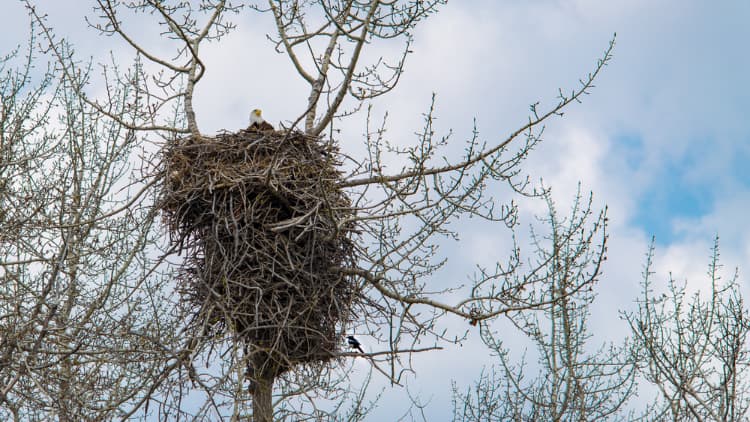
The male and the female bald eagles always build their nests together, and most of the pairs come back to their nests and reuse them for laying eggs. Every year they add to the weight and height of their nests with fresh twigs and sticks, making them stronger. This is how, over time, these nests continue to grow larger and larger. The massive nest in Ohio was continually used by the same pair of bald eagles for 34 years until the weight of the nest caused the tree to fall down.
Bald eagles abandon nests at the slightest human disturbance.
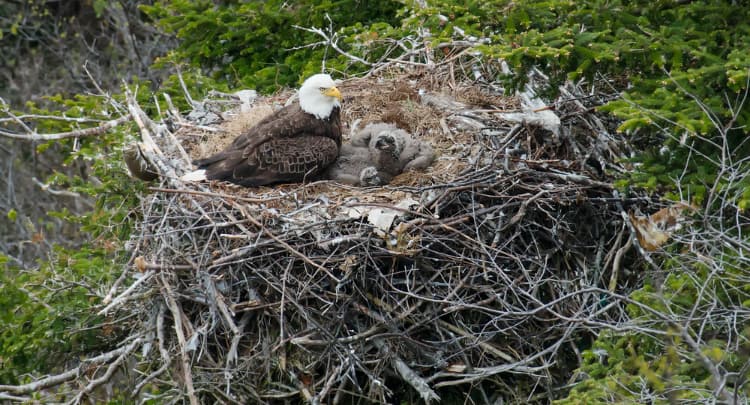
While building their nests, most bald eagles become very sensitive to human disturbances. Though it depends on the eagle pair, more often than not, the to-be bird parents abandon their nests in response to human actions or events, far or near. This can happen not just after nest-building, but even after eggs are laid, and eaglets are hatched. Human disturbances can also distract the eagles to the extent that they build insufficiently strong nests, or keep eggs or babies unattended for a longer time, leaving them unsecured, and malnourished. This is why during nesting; it is very important to be mindful and aware if you live around bald eagles.
Here are a few other splendid facts about the majestic bald eagles that can be thrilling to know!
1 Bald eagles do not develop their white head and tail feathers before 4-6 years.
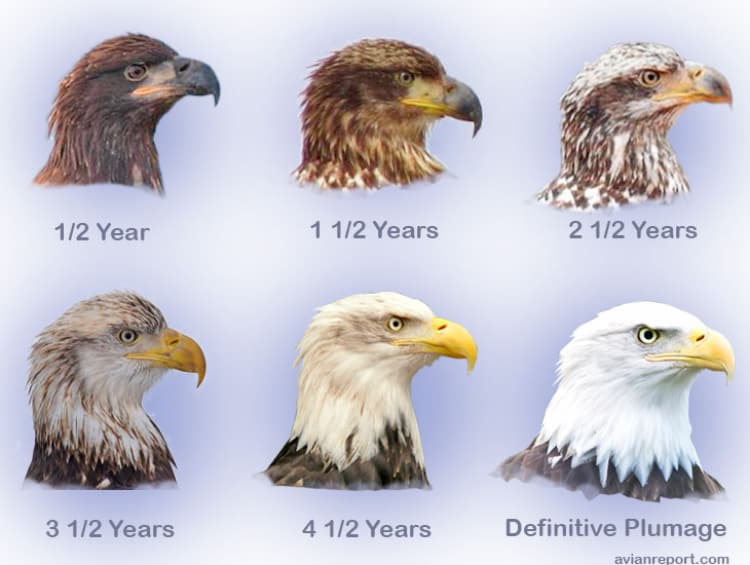
The name bald does not come from the word bald, or bare. But is derived from ‘balde’, the old English word meaning white, because of the white feathers that cover their heads and tails. But interestingly, bald eagles do not get their characteristic white head feathers, or yellow beaks until adulthood, that is around 5 years. This confused many early biologists who thought they were different birds. Their white cover and yellow beaks mean that the eagle has reached the breeding age, whereas the brown plumage of a juvenile bird can serve as camouflage.
2 The bodies of bald eagles adapt to extreme temperatures.
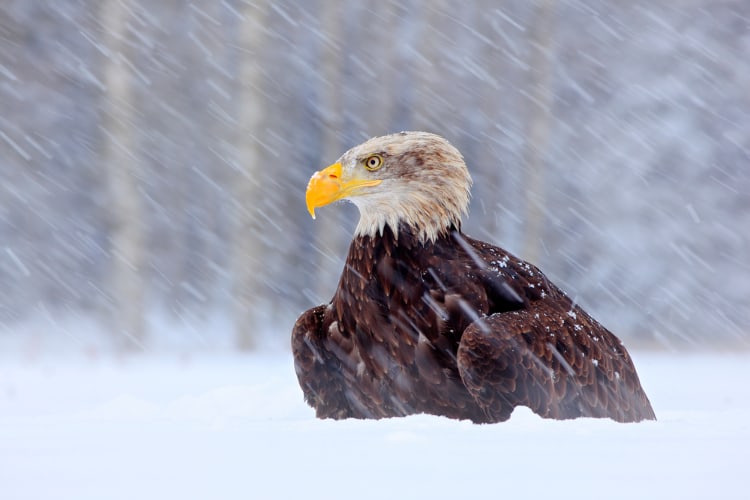
Bald eagles can deal with extreme temperatures. They have a layer of fluffy down feathers under their outer feathers to protect them from the cold. During extreme cold, they minimize energy loss by lowering their nocturnal body temperature by almost 1.8 degrees. This lets them burn fewer calories to stay warm. They also preserve energy by curtailing movement, reducing activity, and also through communal roosting.
3 A Bald Eagle’s scream is not scary, unlike the scream shown in movies.
The eagle screeches in movies are not how a bald eagle sound. The fearsome shrieks of eagles in movies are actually the primary calls of red-tailed hawks, just dubbed over eagle visuals! The bald eagles have a high-pitched, laughing call, called a peal call, that sounds similar to a gull.
4 The bald eagles are swimmers too, and good at breast strokes!
Usually, bald Eagles fly just above the surface of the water, dipping just their claws to catch fish. But sometimes, if the fish is too large, or heavy, they get dragged into the water and get wet. It then becomes difficult for them to fly out of the water. They use their huge wings (spanning 6-8 feet) to swim to the shore. If you see a bald eagle swimming to row its meal to land, you will notice that it looks exactly like breaststrokes. In extreme cases, an eagle can even drown while trying to catch a really large fish, or if it is unable to swim too far to reach the shore.
5 Bald Eagles also have a fun, playful side.
Who doesn’t want a little playtime? These majestic birds are often observed playing with sticks and pine cones. They have their own avian football game that features as many as six bald eagles tossing sticks at each other. They also play with plastic bottles and other objects as toys.
6 Bald Eagles shed feathers symmetrically on each wing to maintain balanced flight.
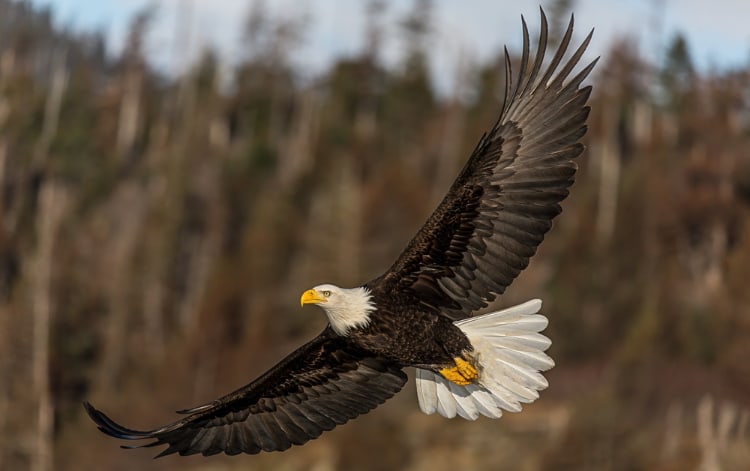
Interestingly, during the molting season, bald eagles synchronously shed the same primary flight feathers on each wing simultaneously to maintain a balanced flight. But if an eagle happens to lose a feather during injury, it will not magically shed that feather on its other wing.
7 It is illegal to own even a single feather of a bald eagle, per law in the U.S.A.
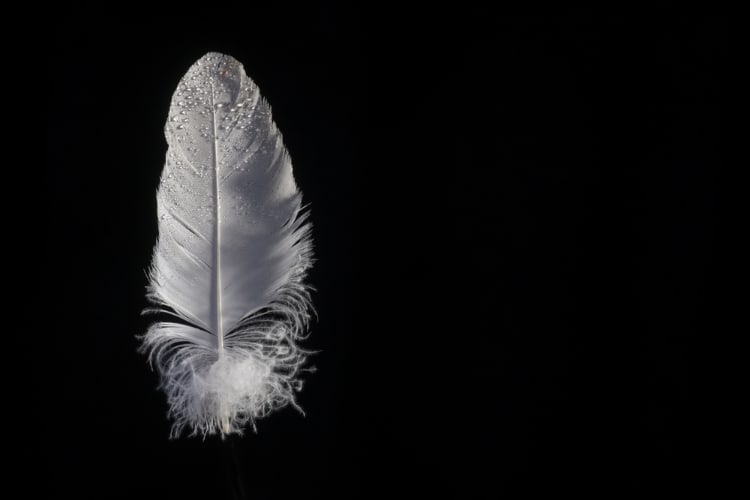
Bald Eagles faced local extinction at the end of the 20th century due to habitat destruction, shooting, hunting, and contamination of their source of food(fish) due to DDT. To protect them, Congress passed a law that made it illegal for anyone to possess, hunt, or sell, bald eagles, and even their feathers, nests, eggs, etc. Violation of the Bald and Golden Eagle Protection Act, passed in 1940 can result in a fine of $100,000 ($200,000 for organizations), imprisonment for one year, or both. A second violation of this Act is considered a felony. But due to this, bald eagles were finally removed from the list of endangered species in 2007.
Today, their numbers have risen remarkably and continue to grow. The strict conservation, awareness, and protection laws for these majestic birds are a beautiful success story giving us hope that we have the power to make a positive impact and save many more endangered species on this planet.
Did you know that a pair of eagles in Shoal Harbor Migratory Bird Sanctuary near Sidney, carried a juvenile red-tailed hawk back to their nest as prey, but adapted it into the family with their three nestlings? The hawk, called “Spunky” by biologists monitoring the nest, fledged successfully.


Top 15 Richest Actresses in the World






21 Less-Known Facts about Famous Celebrities
















